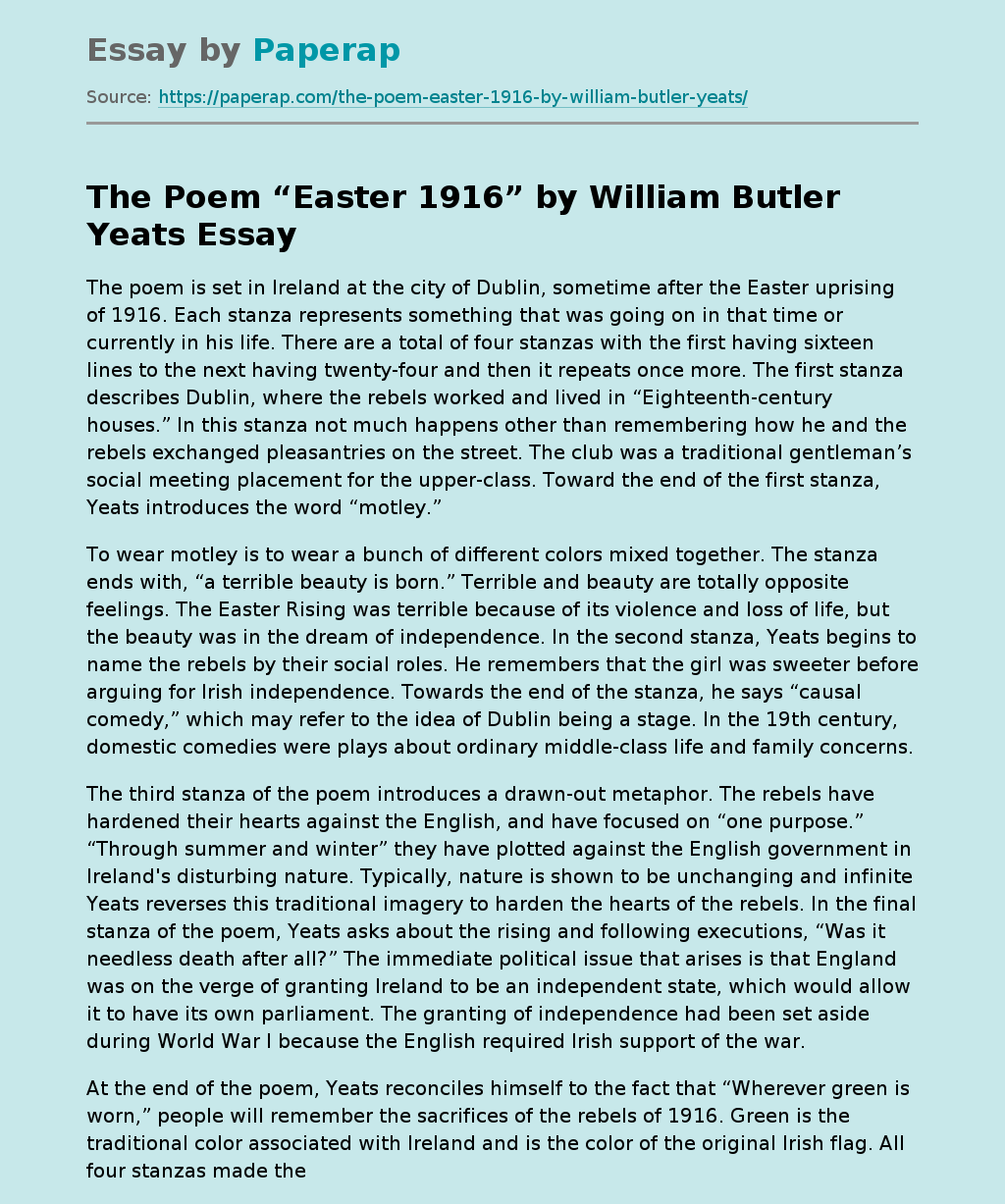The poem is set in Ireland at the city of Dublin, sometime after the Easter uprising of 1916. Each stanza represents something that was going on in that time or currently in his life. There are a total of four stanzas with the first having sixteen lines to the next having twenty-four and then it repeats once more. The first stanza describes Dublin, where the rebels worked and lived in “Eighteenth-century houses.” In this stanza not much happens other than remembering how he and the rebels exchanged pleasantries on the street.
The club was a traditional gentleman’s social meeting placement for the upper-class. Toward the end of the first stanza, Yeats introduces the word “motley.”
To wear motley is to wear a bunch of different colors mixed together. The stanza ends with, “a terrible beauty is born.” Terrible and beauty are totally opposite feelings. The Easter Rising was terrible because of its violence and loss of life, but the beauty was in the dream of independence.
In the second stanza, Yeats begins to name the rebels by their social roles. He remembers that the girl was sweeter before arguing for Irish independence. Towards the end of the stanza, he says “causal comedy,” which may refer to the idea of Dublin being a stage. In the 19th century, domestic comedies were plays about ordinary middle-class life and family concerns.
The third stanza of the poem introduces a drawn-out metaphor. The rebels have hardened their hearts against the English, and have focused on “one purpose.
” “Through summer and winter” they have plotted against the English government in Ireland’s disturbing nature. Typically, nature is shown to be unchanging and infinite Yeats reverses this traditional imagery to harden the hearts of the rebels. In the final stanza of the poem, Yeats asks about the rising and following executions, “Was it needless death after all?” The immediate political issue that arises is that England was on the verge of granting Ireland to be an independent state, which would allow it to have its own parliament. The granting of independence had been set aside during World War I because the English required Irish support of the war.
At the end of the poem, Yeats reconciles himself to the fact that “Wherever green is worn,” people will remember the sacrifices of the rebels of 1916. Green is the traditional color associated with Ireland and is the color of the original Irish flag. All four stanzas made the poem come together and feel like a short story by the way the poet made their words not only tell the reader something but also teach it. The way each event was organized and how the reader can feel what their reading really made this poem seem like an experience. This poem also showed two main themes, being admiration and sacrifice. Yeats admires the people who died during the Irish outbreak and he may be hesitant on coming out and saying how much he really does admire the Irish fighters, but he definitely states how these people sacrificed themselves for something they truly believe in.
The Poem “Easter 1916” by William Butler Yeats. (2021, Dec 14). Retrieved from https://paperap.com/the-poem-easter-1916-by-william-butler-yeats/

